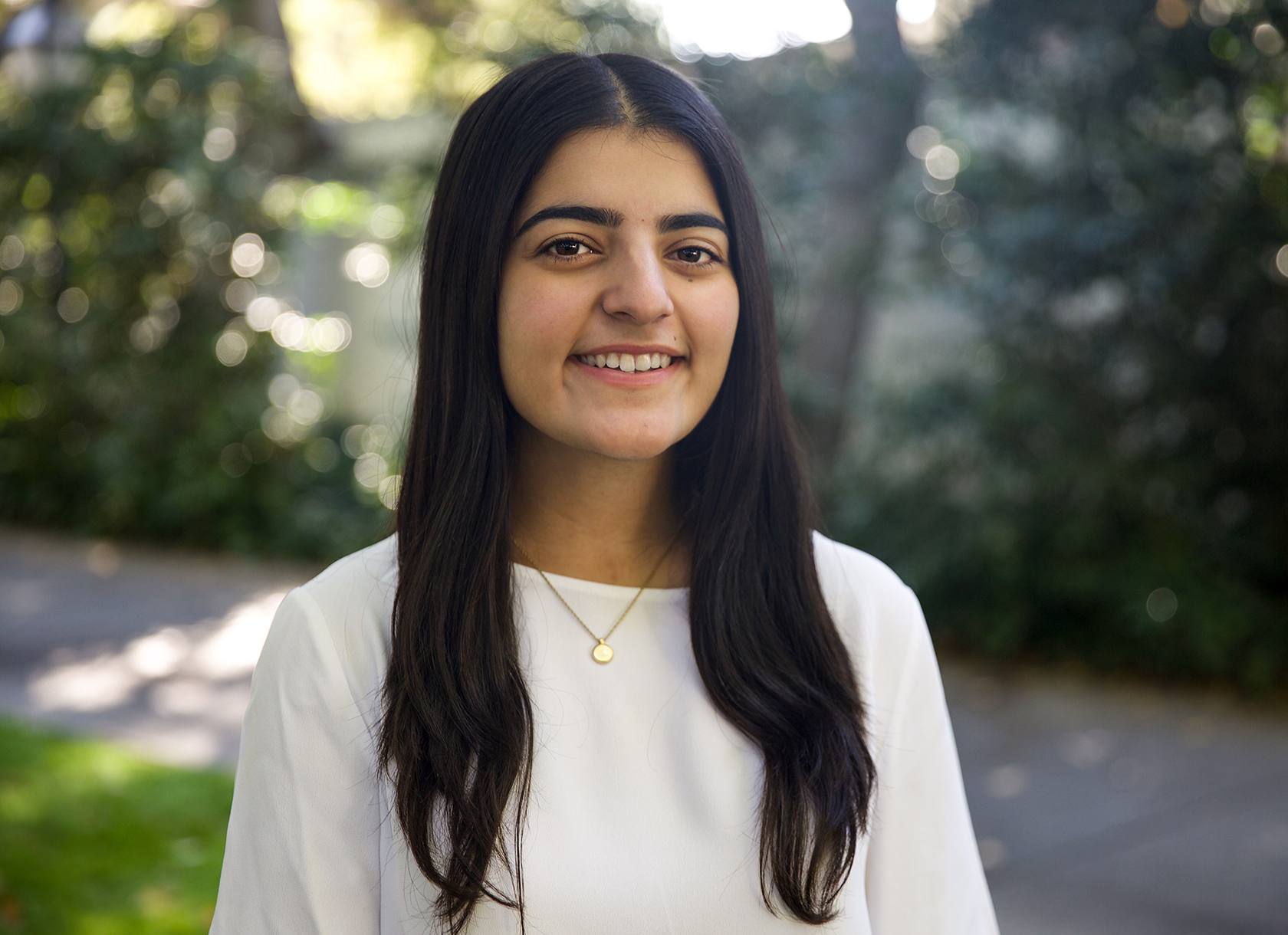By Katie Clelland ’21

Scripps’ Office of Marketing and Communications editorial assistant Katie Clelland ’21 sat down with Science management major Safia Hassan ’21, who will serve as the 2020–21 Scripps Associated Students (SAS) president, to talk about Hassan’s goals for SAS, maintaining community through remote learning, and advice to fellow students.
Katie Clelland: What inspired you to run for this position?
Safia Hassan: I have been on SAS all four years at Scripps as secretary, diversity inclusion chair, co-treasurer, and now president. I have seen just how much of a difference SAS can make on campus, and I wanted to be someone who could initiate change. For example, last spring, my then co-treasurer, Grace Shao ’21, and I founded and spearheaded the COVID-19 Student Relief Fund after learning of the financial hardships students were facing amid COVID-19. We distributed funds to 97 students and met 100 percent of our fundraising goals. The ability to actively address student needs via the COVID-Relief Fund was an experience that pushed me to run for president.
KC: How do your future career goals align with your role as SAS president?
SH: I have always been passionate about identifying important issues and collaboratively devising solutions. I am very interested in healthcare from both a medical and managerial side, and I am even considering pursuing an MD/MBA dual degree. Thus, I want to connect with patients and administrators in my professional career and leverage this collaboration to improve health systems. Just as SAS advocates for tangible solutions, my long-term career goal is to work in tandem with the sectors of patient care and hospital operations to improve health care.
KC: How does this year’s SAS board plan to foster community amid a global pandemic?
SH: Ultimately, we want students to feel supported by the board they elected, and now, in this virtual environment, we are putting in extra effort to make sure students feel connected to campus. We released an indefinitely open COVID-19 Feedback Form over the summer for students to share opinions, concerns, and questions with us throughout our virtual semester. We have increased our social media presence and are also encouraging students to send direct messages to the SAS social media accounts (such as the SAS Instagram account) with questions and comments. We are also planning numerous upcoming virtual programming events—social and professional. Overall, we hope to create a sense of community and normalcy for students while still being mindful of not flooding students’ schedules with virtual events, as we are trying to minimize screen fatigue as much as possible. Quality over quantity is our motto!
KC: What are your aspirations for the 2020–2021 year?
SH: Since there currently is not the best transparency with resources—many students don’t know who or where to seek support from—SAS wants to create an online resource map that details resources available to Scripps students. For example, if a student wanted to know about funding opportunities for taking the GRE, our map could guide them to a page of available financial support options for academic testing. Another goal is to closely collaborate with student activist groups, as we are engaging in work to improve Scripps by making it more accessible to and supportive of its entire community.
KC: What else are you involved in at Scripps?
SH: I am a pre-health ambassador through Keck. In this role, I answer current students’ questions about courses, extracurriculars, and questions concerning career pursuits. I also have conducted research with a professor at Claremont Graduate University on how the Affordable Care Act has impacted health insurance coverage rates nationwide, which was a great experience given my interest in healthcare.
KC: What advice you would give to students in the current virtual pace of life?
SH: I would remind students to allocate time for themselves. In my day-to-day routine, I try to give myself an hour in the morning to focus on myself and things that give me joy. I listen to podcasts, make myself coffee, or even go for a walk. After spending that time on myself, I find myself ready to start my day of classes and meetings.

